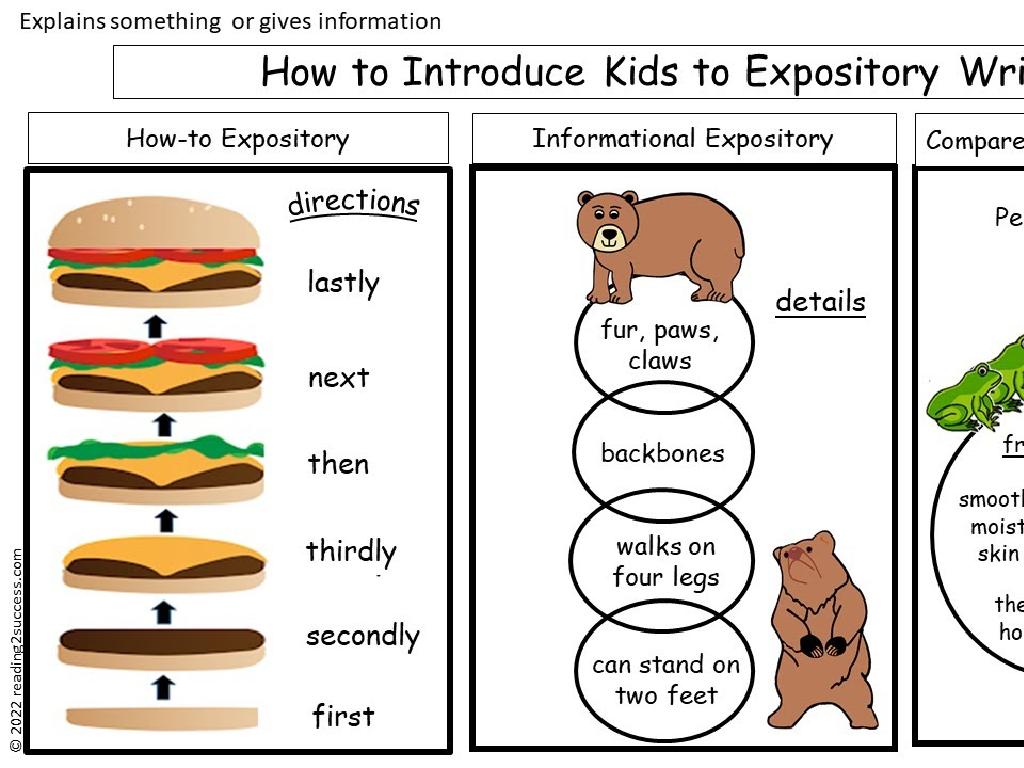Current Economics
Subject: Economics
Grade: High school
Topic: Finance And Capital Markets
Please LOG IN to download the presentation. Access is available to registered users only.
View More Content
Introduction to Current Economics
– Grasp today’s economic pulse
– Explore factors like GDP, employment rates, and inflation.
– Finance & capital markets overview
– Understand stocks, bonds, and investment strategies.
– Relevance of economics in life
– Economics shapes our daily choices and global policies.
– Making informed financial decisions
– Use economic knowledge to plan and invest wisely.
|
This slide introduces students to the basics of current economics, emphasizing the importance of understanding the economy’s status through indicators such as GDP, employment rates, and inflation. It provides a snapshot of finance and capital markets, including different types of investments like stocks and bonds. The slide aims to show students why economics is relevant to their personal lives, influencing their daily decisions and future financial planning. It encourages them to become informed citizens capable of making smart financial choices. Discuss the impact of economic literacy on personal and national levels, and inspire students to follow economic trends.
Understanding Economic Indicators
– Significance of GDP
– GDP measures the total value of goods and services produced, reflecting economic size and health.
– Unemployment rates
– Unemployment rates indicate the percentage of the labor force that is jobless and actively seeking employment.
– Inflation and CPI
– CPI measures the average change over time in the prices paid by consumers for a market basket of goods and services.
– Interpreting economic health
|
This slide aims to introduce students to the key economic indicators that reflect the health and stability of a country’s economy. Gross Domestic Product (GDP) is a primary indicator used to gauge the health of a country’s economy. It represents the total dollar value of all goods and services produced over a specific time period. Unemployment rates are used to measure the number of people actively looking for a job as a percentage of the labor force. The Consumer Price Index (CPI) is an indicator that measures the average change in prices over time that consumers will pay for a basket of goods and services. Understanding these indicators helps economists and policymakers gauge the overall economic situation and make informed decisions. Encourage students to think about how these indicators might affect their own lives and the economy around them.
The Stock Market: An Overview
– Defining the Stock Market
– A platform for buying & selling shares, representing company ownership.
– Stock Market’s Economic Role
– Facilitates capital flow, influencing economic growth & stability.
– Interpreting Market Indices
– Indices like the Dow & S&P 500 track market performance; learn to read them.
– Impact on Personal Finance
– Understanding the market aids in making informed investment decisions.
|
This slide introduces students to the concept of the stock market, its function, and its significance in the economy. Begin by defining the stock market as a marketplace where securities are traded, and explain how it allows for the buying and selling of company shares. Discuss the role of the stock market in allocating resources and capital in the economy, and how it can be a barometer for economic health. Teach students how to read and understand stock market indices, which are indicators of the market’s overall performance. Finally, touch on the relevance of the stock market to personal finance, emphasizing the importance of being financially literate in today’s economy. Encourage students to follow current events related to the stock market to see these concepts in action.
Government and Fiscal Policy
– Influence of fiscal policy
– Government spending and taxes affect overall economic activity, employment, and inflation.
– Budget deficits and surpluses
– A deficit occurs when spending exceeds revenue; a surplus is the opposite.
– Understanding national debt
– The total amount of money that a country’s government has borrowed.
– Economic implications of debt
– Debt can lead to higher taxes and interest rates, affecting growth and personal finances.
|
This slide aims to explain the role of government fiscal policy in influencing the economy. Fiscal policy involves adjustments in government spending and tax policies to control economic growth. Budget deficits and surpluses are critical aspects, indicating the government’s financial health. The national debt is the accumulation of past deficits and has significant implications for the economy, including potential impacts on inflation, interest rates, and future tax burdens. It’s essential to discuss how these factors interplay to affect the overall economic environment and individual financial situations. Use real-life examples, such as the impact of stimulus packages or austerity measures on the economy, to make the concepts more relatable to high school students.
Monetary Policy and Central Banks
– Central banks’ economic role
– Central banks manage monetary policy, control inflation, and stabilize currency.
– Impact of interest rates
– Interest rates influence borrowing costs, affecting consumer spending and investment.
– Quantitative easing
– Quantitative easing involves buying securities to increase money supply and stimulate the economy.
– Quantitative tightening
– Quantitative tightening is the selling of securities to decrease money supply and control inflation.
|
This slide introduces students to the complex role of central banks in shaping the economy through monetary policy. Central banks, like the Federal Reserve in the U.S., use tools such as interest rate adjustments to influence economic activity. Lower interest rates can encourage borrowing and spending, while higher rates can help cool down an overheated economy. Quantitative easing (QE) and tightening (QT) are advanced strategies used to manage the money supply and economic growth. QE is typically used during economic downturns to inject liquidity into the capital markets, while QT is used to withdraw excess money from the economy to prevent high inflation. Students should understand these concepts as they are fundamental to the functioning of modern economies and have a direct impact on financial markets.
Global Economics: Interconnectedness and Impact
– Global events shaping domestic economy
– Events like oil price changes can affect local gas prices and transportation costs.
– Exchange rates and trade impact
– Strong currency can make exports expensive, imports cheaper, and vice versa.
– Role of international trade agreements
– Agreements like NAFTA set rules for trade and can influence job markets.
– Case study: A global event’s local effect
|
This slide aims to illustrate the intricate relationship between global economics and domestic financial health. Highlight how international events can directly influence a country’s economic stability, such as changes in oil prices impacting local transportation costs. Discuss how exchange rates affect trade by making exports and imports more or less expensive, which in turn affects domestic businesses and consumers. Explain the significance of international trade agreements, using NAFTA as an example, and how they can dictate trade flows and impact employment within countries. Use a recent global event, such as a major policy change in a leading economy, to demonstrate these concepts in a real-world scenario. Encourage students to think critically about how global economics can affect their daily lives and future career opportunities.
Current Economic Challenges
– Recent economic events overview
– Explore key events like market fluctuations and policy changes.
– COVID-19’s global economic impact
– Assess how the pandemic disrupted supply chains and employment.
– 2008 Financial Crisis case study
– Examine the causes and effects of the 2008 financial meltdown.
– Lessons learned from past crises
– Discuss how past economic challenges can inform future decisions.
|
This slide aims to provide students with an understanding of the current economic challenges faced globally. Begin with a brief overview of recent economic events, highlighting significant market fluctuations and policy changes. Delve into the impact of COVID-19 on global economics, discussing disruptions to supply chains, shifts in employment, and government interventions. Use the 2008 Financial Crisis as a case study to analyze the causes of economic downturns and the effectiveness of the responses. Encourage students to think critically about the lessons that can be learned from past crises and how they can be applied to current and future economic challenges. This discussion will help students grasp the complexity of economic systems and the importance of informed policy-making.
Class Activity: Economic Debate
– Divide into groups for debate
– Research a current economic issue
– Choose topics like cryptocurrency impact, trade wars, etc.
– Present findings and perspectives
– Vote and discuss the best argument
– Encourage critical thinking and respectful discourse
|
This activity is designed to engage students in current economic issues through a structured debate. Divide the class into small groups and assign or let them choose a relevant topic. Provide guidelines for research and presentation, ensuring each group understands the issue from multiple perspectives. After presentations, conduct a class vote to determine the most convincing argument. Use this as an opportunity to discuss the importance of evidence-based reasoning and the impact of economic policies. Possible debate topics include the effects of minimum wage changes, the pros and cons of tariffs, or the economic implications of climate change policies.






